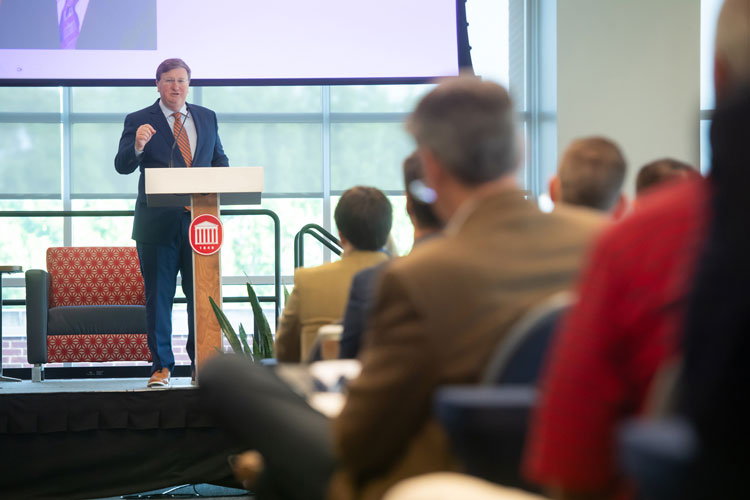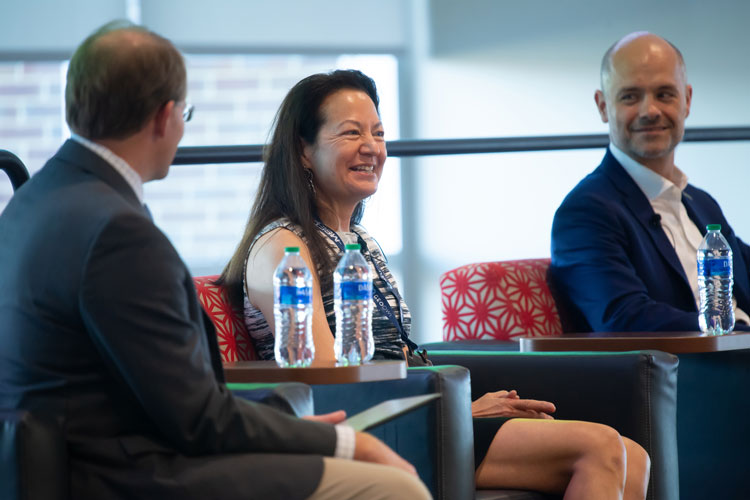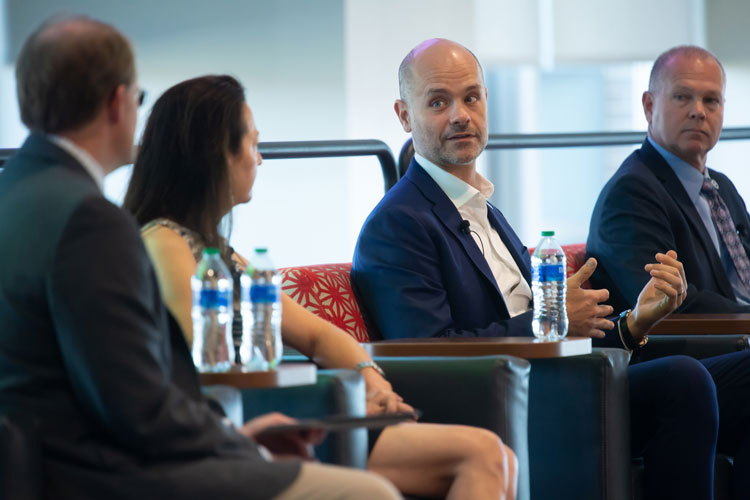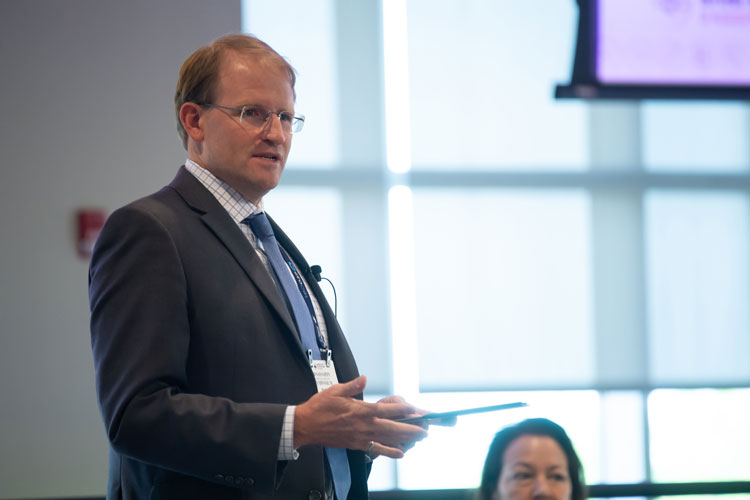
Second annual symposium brings more than 100 businesses from 15 states
A thriving commercial industry is the key to space exploration and expanding the nation’s defense capabilities, but the United States – and Mississippi – must continue to invest in the infrastructure, policy and research to help that industry grow.
That was the message from industry experts this week at the second annual Aerospace and Defense Alliance of Mississippi Symposium. During the two-day conference, representatives of more than 100 businesses and 15 states gathered at the University of Mississippi to talk about the future of space and defense in the Magnolia State.
“It’s an exciting day to be in Mississippi, not only to kick off this conference but to continue to kick off an economic rebirth of the state of Mississippi – a rebirth that, I must tell you, the aerospace and defense industry is going to play a key role in going forth,” Gov. Tate Reeves said.
“Our economy is deeply intertwined with your industry. We have been extraordinarily successful in our past, but what I want you to know is … we refuse to rest on our laurels and past successes. We are more interested in focusing on our future wins than past successes.”
The symposium, co-hosted by Mississippi Enterprise for Technology and the Aerospace and Defense Alliance of Mississippi, was designed to bring together industry leaders, policymakers and experts to collaborate on building the state’s aerospace and defense industry. That includes everything from military-grade weapons to hardware for moon landings, and every satellite in between.
“You already know this, but it’s always worth saying: Mississippi is home to a thriving and growing ecosystem of research and development,” U.S. Sen. Roger Wicker said in a video message.
“Every year, more and more scientists and startups recognize something special is happening here and they choose to make their home in Mississippi.”
The aerospace and defense industry is driven by commercial entities – from companies that build rockets, missiles and satellites to space tourism companies and electronic communications hubs, said Josh Brost, chief resource officer for Relativity, a manufacturing company that created and launched the world’s first 3D-printed rocket.
Brost spoke during the symposium’s first panel, which focused on opportunities and challenges of developing industry in space.
“If you look at the commercial industry in space, roll back the clock 10 years ago and the commercial industry was theory without much substance,” he said. “Fast forward over the last 10 years, it’s been this enormous commercial renaissance, raising billions and billions of dollars and increasing commercial availabilities.”
These companies will spearhead humanity’s return to the moon and beyond, said Michelle Hanlon, executive director of the university’s Center for Air and Space Law and CEO and founder of For All Moonkind.
“It’s really vital that we protect our commercial industry in the United States because we know the industry that will get us back to the moon is the commercial industry,” she said.
Protecting commercial industries means having the legal infrastructure to protect those entities in space, Hanlon said.
“Nobody wants rules until they do; nobody wants to be regulated,” she said. “But this is going to become a very competitive space, and we have to think about it not only in terms of a commercial space, but as a space that everyone will want access to around the world.
“Right now, we have tremendous uncertainty in who is going to regulate our space stations, space manufacturing, space mining. We don’t know yet. We need solid answers right now. We need certainty.”
But to help these industries grow on the ground, Mississippi also needs to have the workforce and infrastructure to support the aerospace and defense industry, said Nathan Murray, director of the National Center for Physical Acoustics at Ole Miss.
“We’re talking about an interconnectedness not only in the economy, but the education system and the policy system,” he said. “It’s time for the states to take a lead role in their place in this new space economy.”
Workers in a broad range of fields have roles to play in the aerospace and defense industry, said Brost and John Bailey, director of NASA‘s Stennis Space Center.
“The reality is the skill sets we’re hiring for are really prevalent in other industries,” Brost said. “You can pull someone out of automotive, oil or gas and have them thrive in aerospace. More than anything, it really is a marketing challenge.
“Anybody can be involved in space, and that’s the message we have to get out.”
Broadcasting that message is one of the inspirations behind the annual symposium, said Davis Pace, president and CEO of the Mississippi Enterprise for Technology. Since last year’s symposium, the Aerospace and Defense Alliance of Mississippi has more than doubled its membership, he said.
“Mississippi’s aerospace and defense sectors are thriving, evidenced by recent developments such as Anduril Industries’ expansion into the state, the ongoing success of industry giants like Raytheon and Ingalls, and the rapid growth of innovative homegrown companies like Camgian,” Pace said.
“These achievements underscore Mississippi’s dedication to innovation, collaboration and excellence.”
By Clara Turnage







